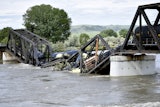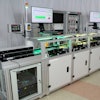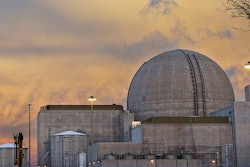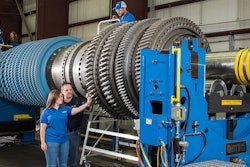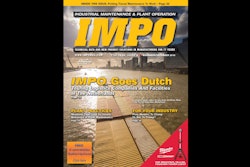Anyone working with nuclear materials knows that navigating the nuclear regulatory environment is as complicated as it is critical. Going beyond federal regulations, the industry developed Nuclear Quality Assurance-1 (ASME NQA-1) with specific criteria to aid each site in maintaining the rigorous quality standards required in the nuclear industry. While NQA-1 is not a federal regulatory standard, its implementation aids in managing a nuclear facility to ensure the highest degree of safety.
Within the nuclear industry, there are two distinct realms to consider:
- The nuclear power industry that is regulated by the Nuclear Regulatory Commission (NRC) under 10 CFR 50.
- The nuclear weapons industry that is administered by the National Nuclear Security Administration (NNSA) under the Department of Energy (DOE) and is regulated by 10 CFR 830.
While different federal statutes apply to each of these sectors, both subscribe to the NQA-1 standard for quality because in the nuclear industry, quality leads to safety.
Product Lifecycle Execution (PLE) Systems Make Compliance Possible
For both the nuclear power and nuclear weapons industries, the process of keeping up with all the requirements, federal as well as NQA-1, is time-consuming, costly, and often overwhelming. It’s one of the reasons nuclear power plants stopped being built in the United States: the industry found it too difficult to manage the paperwork on everything that must be documented. This is also a reason those in the industry are turning to a Product Lifecycle Execution (PLE) systems as a solution. A PLE takes over where Enterprise Resource Planning (ERP) and Product Lifecycle Management (PLM) leave off, managing the day-to-day work done on the shop floor, in equipment rooms, and testing labs.
For instance, manufacturers of nuclear components or assemblies may literally require months of paperwork review before the part can be presented to the oversight agency for approval. Nuclear quality organizations were finding paperwork not filled out properly, missing signatures, data collection either recorded incorrectly or in such a manner that it couldn’t be read, which can have disastrous consequences. An effective PLE can turn weeks of paperwork review into an hour, resulting in increased efficiency and superior quality.
Consider just a few of the questions those in the nuclear sector need to answer precisely:
- Has tooling been calibrated?
- Were test results within specifications?
- Was the process followed in proper sequence?
- Was there a proper handover from shift to shift?
- Were personnel trained and qualified prior to performing work?
Quality organizations were confounded by the time it took to walk down every single item in the build book or maintenance record, and get answers from the people who had done the work. After all, the work may have happened six months prior to their review.
Add to this the issue of data integrity. If a “3” was confused with an “8” in someone’s paper entry, measurements may be wrong in the documentation review. Or, for example, a tool is found to have drifted out of calibration when it came back to metrology meant that the quality team had to walk back to every place that tool was used to find out if the data collected was affected by the measurement drift. In this case, the paperwork is substantial and difficult, making it almost impossible to reach production goals.
PLE Systems Promote Safety and Quality
Nuclear power plants are required to maintain records on all critical materials and equipment, which must meet extremely tight quality standards. For example, steel around the reactor core must be of a certain grade to withstand the constant bombardment of radiation. (Imagine control rods deforming or reactors not being in proper configuration.)
Because these are critical safety systems that we rely on, every seal on every pump, and every valve on every system must be tested to meet specific requirements, leading to maintenance requirements on a nuclear facility that are extremely rigorous. They have to be followed exactly or you’re out of compliance, and when you miss a technical safety requirement … you get fined severely, repeatedly, for every mistake. If you have an accumulation of mistakes, you’ll be shut down.
If a nuclear facility is shut down, it may never restart. So managers of these facilities constantly struggle with the question of how to keep the facility open and productive with all the regulations that constantly have to be met.
Leveraging a sophisticated product lifecycle execution solution helps to ease the regulatory dilemma for nuclear industries by managing processes to the standards required by NQA-1. It automates daily work processes, and maintains traceabilty of everything from parts and materials, to tests and inspections, revision-controlled work instructions, and tool calibrations. It traces people involved, as well as the sequence in which things are done. For example, a PLE ensures that if a technician has a required test, it cannot be skipped. A PLE also validates data in real time, so if a measurement is found to be out of spec, it’s caught immediately, not six months later when documentation is being reviewed. If a non-conformance is found, it is managed immediately, with incorporation of long-term corrective and preventive actions, and follow-up audits. A company that manages nuclear facilities and operations to this level stays within their documented safety analysis, and is not only a safer and more efficient facility, they can easily prove it to their federal regulators.
Holly Haines, an engineer for iBASEt with 20 years of nuclear industry experience.
